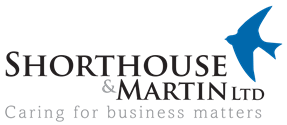Summer Newsletter 2021
Leading Article
Coronavirus support measures update
We now know that COVID-19 restrictions in England will remain in place until 19 July, while the other parts of the UK are also still some way off from returning to normal. However, some business support measures will fall away or will be reduced from 1 July 2021. This will particularly affect businesses that are not able to fully open.
Business rates
Many properties used for retail, hospitality, leisure or child nurseries were given a business rates holiday from 1 April 2020 to 30 June 2021. In England, 34% of these business rates become payable for periods from 1 July 2021 to 31 March 2022, but this relief is capped at £105,000 per business.
In Scotland, the 100% business rates relief for retail, hospitality and leisure businesses has been extended to 31 March 2022, but unlike in 2020/21 the business will have to apply to their local council for this relief.
In Wales and Northern Ireland, the 100% business rates holiday continues for the whole of 2021/22 for retail, leisure, hospitality businesses and charities. However, for Welsh properties, this only applies where the rateable value of the property is less than £500,000.
Commercial rent
There has been no rent holiday during the pandemic, but landlords have been barred from evicting tenants from commercial premises. This restriction will now remain in place until March 2022.
In addition, the existing debts of unpaid rent accumulated during the pandemic will be ring-fenced, in order to protect struggling tenants. These rent arrears will then go through a new arbitration process to help landlords and tenants resolve disputes over bad debts. Landlords are also unable to issue a winding-up petition to collect unpaid debts.
Furlough
CJRS claims for periods from 1 July 2021 can only cover 70% of the employee’s usual wage while on furlough, capped at £2,187.50 per month. The cap is adjusted in proportion to the number of hours on furlough. However, the employer must continue to pay 80% of the employee’s wage per month for furloughed periods, plus all the employer’s Class 1 NIC and the minimum amount of employer’s contribution to the workplace pension.
VAT
The reduced rate of VAT of 5% for hospitality and tourism businesses will apply until 30 September 2021, when it will increase to 12.5% until 31 March 2022.
Employees
Some coronavirus tax measures for employees have been extended until 5 April 2022, including:
- Employees who wish to make a working from home tax relief claim for 2021/22 can now do so. If a claim was made in 2020/21 it will not roll forward automatically. You can claim £6/week, even if only working from home for (say) one day a week.
- If you were provided with a bicycle or cycling equipment under a Cycle to Work scheme before 21 December 2020, there will be no taxable benefit this year, even if you are not using the bicycle mainly for travelling to or from work or in the course of work (e.g. because of home-working).
In this newsletter, we highlight a number of other areas that you may need to consider over forthcoming months.
GENERAL TAX
Child benefit clawed back
Child Benefit is a universal benefit; every family with a child under 16 (20 if child is in approved education or training) is entitled to receive it. However, since 2013, Child Benefit has been clawed back from certain higher rate taxpayers by means of a tax charge.
This tax charge applies where the higher earner in the family has annual income of over £50,000. When that person’s income exceeds £60,000, all the family’s child benefit is clawed back as income tax.
However, in the current tax year to 5 April 2022, parents who pay income tax at a maximum rate of 20% may also be liable to repay some of their child benefit as tax, as the 40% tax rate applies only to income above £50,270.
Where you are the higher earner in your family and your annual income is over £50,000, you need to declare the amount of child benefit your family receives on your annual tax return. If you don’t normally complete a tax return, contact HMRC to register for self assessment. We can help you with this.
It may be possible to avoid the child benefit tax charge by equalising the income levels of both earners in the family. This is possible if both taxpayers run a business together, but not so easy when both are employed by third parties. Another strategy is to reduce your relevant income below the £50,000 threshold by using tax relief provided by Gift Aid donations or personal pension contributions.
It is important to claim Child Benefit, as the claim triggers the issuance of a National Insurance number for the child and can provide National Insurance credits for the claimant parent while they are not working.
If you are a high earner, you can continue the Child Benefit claim, but opt out of receiving payment of the benefit, to avoid having to deal with the tax charge. This opt-out can be reversed at any time should your income drop below £50,000.
We can help you deal with all matters related to child benefit, including the possible tax charge that claiming it may trigger.
Tax credit renewals
Everyone who claims Working or Child-related Tax Credits should have received a Tax Credits renewal pack for the year 2021/22 from HMRC by now. If you haven’t received your renewal pack, please contact HMRC without delay on 0345 300 3900.
Where your income has reduced permanently as a result of the Covid-19 pandemic, check that your income details shown in the Tax Credit pack are correct.
Where your income has fallen temporarily as a result of coronavirus, perhaps because you were furloughed for a period, you don’t have to report this. HMRC will treat your Tax Credit claim as if you have been working your normal hours while you were furloughed.
Other changes in your personal life do need to be reported to HMRC, as they may affect your Tax Credit claim. If you have altered your living arrangements, in terms of who you live with or where you live, this needs to be reported, as does any change in your childcare costs.
If you are self-employed, you may have received a number of covid-related grants in the year, such as under the Eat Out to Help Out Scheme or the Self-Employed Income Support Scheme (SEISS). These grants are all treated as taxable income, so need to be included on your Tax Credits renewal form.
However, you should not include any Test and Trace Support payment you may have received, which is a one-off lump sum of £500.
Your Tax Credits claim must be renewed by 31 July 2021, even if you need to include an estimated figure of your profits for the year. You can renew your Tax Credits claim online at www.gov.uk/renewing-your-tax-credits-claim.
Please contact us if you need any assistance when renewing your tax credits.
PROPERTY TAX
CGT on sale of homes
The profit you make on selling a buy-to-let property or a second home is generally subject to capital gains tax (CGT). Also, you may have to pay some CGT on the profit you make from selling your main home if you have not lived in that property for the entire period of ownership.
Any CGT arising on UK residential properties must be declared and paid within 30 days of the completion date of the deal. A ‘best estimate’ of the tax can be used if all the information needed to calculate the correct figure is not available. This will avoid penalties (see below), even if the actual tax turns out to be a bit higher when you eventually submit amended figures.
The declaration must be made through your online UK Property Account. This is a separate system to your online Personal Tax Account and it is not integrated with your annual selfassessment tax return. HMRC may tie up all three online accounts one day, but the UK Property Account was built solely to collect tax due on the sale of residential property more quickly.
Once you have submitted details of the property sale (we can help you with this), HMRC will issue you with a reference number. You must use this reference number when paying the CGT due, which needs to arrive with HMRC within 30 days of the completion date.
HMRC will demand a £100 penalty if the report of the sale is late. This penalty will increase where the delay in reporting is six months or more. Also, interest will be incurred on the unpaid CGT.
Those required to file a selfassessment tax return, because they have other gains or income to report, must declare the property gain once more. If you have no reason to file a selfassessment tax return, perhaps because all your income is dealt with through PAYE, then the 30-day return is sufficient to meet your reporting obligations.
If you own any residential properties that might generate a CGT liability when eventually sold, keep a file of all relevant details (such as acquisition or extension costs), so that CGT due can be calculated promptly when the disposal happens. We can help you with the calculations and the reporting obligations.
Furnished holiday lets
Landlords who let holiday accommodation have largely been left out of the covid-related business support. Where the property was registered for business rates, the owner qualified for some small local authority grants, but other landlords received nothing.
Holiday letting businesses have also suffered from the various lock-downs that restricted travel across the country. This has meant many furnished holiday lettings (FHL) won’t have been let for 105 days in the year, the minimum that is required to achieve the favourable FHL tax treatment.
However, you can retain the FHL tax treatment by claiming a ‘grace period’ for the 2020/21 tax year. You must have let the property as short lets for at least 105 days in either or both of the previous two years (2019/20 or 2018/19).
Where you hold more than one holiday property, the number of days let can be averaged over all your properties in a single tax year, to achieve the minimum 105 days for all properties.
We can help you make the necessary elections to retain favourable FHL tax treatment for your properties. We can also calculate any tax due on a disposal, if you have decided to cease letting and want to sell the property.
EMPLOYEE TAX
Beware of IR35 traps
Where a contractor operates via their own personal services company (PSC), work performed for large or mediumsized clients in the private sector may now fall under the ‘off-payroll working’ rules.
This is a new version of IR35, which requires the end-client to decide whether there is a deemed employment relationship for tax purposes with the contractor. If there is such a relationship, the end-client (or any other fee-payer in the contractual chain, such as an employment agency) must deduct PAYE and employees’ National Insurance Contributions (NIC) when paying the PSC’s invoices, as well as accounting for employer’s NIC. These new arrangements have meant that many contractors have been pushed into working via so-called “umbrella companies”.
The contractors become employees of the umbrella company instead of their own PSC. The umbrella company operates PAYE for the contractors and takes a cut of the fees. It should provide each contractor with an employment contract and payslips.
In addition, the umbrella company should give each worker a breakdown of the assignment rate received from the employment agency and list its costs, including the employer’s NIC. The employer’s NIC should not be deducted from the worker’s contract rate.
Some umbrella companies try to boost their profits by bending the law to take advantage of tax breaks designed for small companies. One method is to form multiple small companies (“miniumbrellas”), each of which employs just one or two people. This allows each mini-umbrella to claim the Employment Allowance, worth up to £4,000 per year in employer’s NIC savings. The miniumbrella company may also be dissolved before it pays any corporation tax.
If you suspect you are a contractor caught up in a mini-umbrella scam, talk to your ultimate customer, and warn them about potential fraud in their supply chain.
If your business uses temporary workers, be sure to carry out due diligence checks on your supply chain and be clear about who pays those workers and how they are paid. Alarm bells should ring if your workers have been promised non-taxable pay, higher take-home pay, or have been asked to sign a loan or annuity agreement.
We can help you understand the full implications of the new offpayroll working rules and advise you on the complications that umbrella arrangements can bring.
Income bunching problem
The Self-Employed Income Support Scheme (SEISS) grants are taxable and need to be reported on the tax return for the tax year in which they were received. This may not be the same tax year in which the profits they are designed to replace would have been taxed.
The result can be unexpectedly high taxable income for 2020/21 and a corresponding low taxable income in 2021/22.
Example
Scott is self-employed and draws up his accounts to 30 April. His recent accounts, excluding SEISS grants, show profits of:
- £36,000 for year to 30 April 2020, taxed in 2020/21
- £5,000 for year to 30 April 2021, taxed in 2021/22
Scott received three SEISS grants totalling £16,500 in 2020/21, which are taxable in that year. His taxable income before allowances for 2020/21 is therefore £52,500, which pushes Scott into higher rate tax. This could also mean that he suffers a further tax charge to claw back some of any child benefit he or his partner might have received.
In May 2021 Scott claimed a fourth SEISS grant of £2,400. He won’t be eligible for the fifth SEISS grant as his business is now fully open. Scott’s taxable income for 2021/22 will be £7,400, which is covered by his personal allowance (PA) of £12,500, so he pays no income tax for 2021/22 and some of his PA is unused.
We can help you make sure that you are reporting your SEISS grants correctly and also help you deal with any related issues.
BUSINESS
Facts about exporting goods
The rules and paperwork required to export goods to EU countries have become much more complicated.
As an exporter, you need two EORI numbers: a UK EORI number to include on export paperwork and an EU EORI number for your transport provider and freight forwarder to accept the shipment and carry it into the EU.
Check if you need an export licence for the goods to leave the UK (e.g. for livestock, chemicals and foodstuffs) and whether you need an import licence to import them into the EU.
Any export sales you make, whether to the EU or the rest of the world, are zerorated supplies for UK VAT purposes. You need to retain proof that the goods have left Great Britain, by keeping documents such as the bill of lading, transportation dockets and the sales invoice.
Next, decide who will complete the customs export declaration. This could be your business itself or a customs intermediary, such as an agent or freight forwarder. All of the following information will be required:
- Commodity code (HS code) for each product
- Departure point and destination
- Consignee and consignor
- Nature, amount and packaging of the goods
- Transport method
- Any certificates and licences
- Customs procedure code
- Declaration Unique Consignment Reference (a 35-digit reference used so that the CHIEF system can track the goods on arrival at the port of departure and arrival into the port of destination)
- An exporter statement of origin to allow your importer to qualify for zero tariffs.
The last point means you need to get to grips with the ‘rules of origin’ for your goods, which is another layer of complexity.
Finally, you need to file the export declaration with the UK National Export System (NES). You need to register to use that system and to use HMRC’s online customs systems (CDS and CHIEF).
Please get in touch if you need help in understanding the new rules.
Repayment claims challenged
Many taxpayers are currently claiming tax refunds, as the covid-19 pandemic has turned normally profitable businesses into loss-making ones. Unfortunately, fraudsters are also trying to cash in, by using the ID details of genuine businesses to claim fictitious refunds.
If you have submitted a tax refund claim that is unusual for your business, HMRC may write to ask you to confirm your identity. The letter asks you to call HMRC within 30 days on 0300 200 3310 and to quote your unique tax reference (UTR) number. You need to call HMRC yourself, as we cannot make this call on your behalf as your tax agent.
Following this call, you may receive a second letter from HMRC, which requires a written response. You will be asked to provide copies of three forms of ID to prove your name and address.
You may also be asked to fill in a ‘repayment questionnaire’ that asks about the process you went through to submit the tax return, including who submitted it, for what fee and to where the repayment was authorised to be paid. Before you can get your tax repayment, you will need to complete an R38 tax refund form. We can help you with these documents.
If you don’t respond to either letter from HMRC, you won’t receive the tax refund and your self assessment account will be closed. You may also be blocked from claiming any further Self-Employed Income Support Scheme (SEISS) grants.
HMRC targets businesses not using MTD
Most VAT-registered businesses have been required to comply with the Making Tax Digital (MTD) regulations for VAT since 1 April 2019. Until now, HMRC has taken a soft approach to those who have not switched to submitting VAT returns using MTD-compliant software, but that is changing.
Around 800 businesses have been told that they will have to file VAT returns using MTD software from 8 July 2021, as the old VAT portal will be closed to them. If the response to this pilot letter is positive, HMRC will write to the rest of the 100,000 MTD refuseniks, telling them they have no choice but to convert to MTD filing for VAT.
Businesses that are voluntarily registered for VAT, as their turnover has never exceeded £85,000, will be required to file VAT returns using MTD from 1 April 2022. These businesses should not be chased by HMRC to join MTD just yet.
The MTD regulations require that the VAT data flows through the accounting system without manual intervention, such as re-typing or copying and pasting figures. If your system still contains these manual breaks, they need to be replaced by digital links without delay.
If you need to sign up for MTD, please speak to us beforehand, as there are steps that we need to undertake as your tax agent.
Postponed import VAT accounting
As the UK is no longer a member of the EU, import VAT applies to almost all goods imported from the rest of the world, including from the EU into Great Britain (GB: i.e. the UK excluding Northern Ireland).
There is an exception for low value imports worth no more than £135 (€150).
To help importers account for and pay this VAT, the UK government introduced postponed import VAT accounting (PIVA). This is a permanent change to the VAT system in the UK.
The ‘postponed’ bit means that the importer does not have to pay the VAT on entry of the goods to the UK; instead, they account for the VAT as a reverse charge entry on their next VAT return.
The “reverse charge” means there are two entries on the VAT return that will normally cancel each other out. However, this won’t be the case if there is any non-business use of the goods, or where the importer is partially exempt and so not permitted to reclaim all VAT on purchases.
If you want to defer paying the import VAT, you need to do the following:
- Have a GB EORI number – this is a one-off application
- Tell your freight agent you are using PIVA
- Enrol for the customs declaration service online – also a one-off application
- Tick option G on the customs declaration form
- Download your PIVA statements from: https://www.gov.uk/guidance/get-your-postponed-import-vat-statement
The monthly PIVA statements are an essential part of your VAT records. They give you the correct figures of import VAT to include on your VAT return. Remember to download the PIVA statements regularly, as they are only available online for six months.
Where the PIVA statement is not available, HMRC allow you to estimate the amount of VAT paid, but the figure should be corrected on the following quarter’s VAT return.
If the import VAT is paid on arrival of the goods in the UK, instead of being postponed, the amount of VAT paid will be shown on a C79 certificate. You need to carefully preserve any C79 certificates you receive.
If you are unsure about any of the new VAT rules on imports, please contact us for help.
Business rates on empty properties
As a landlord holding commercial property, you may have lost rental income during the pandemic as tenants left or went into liquidation.
The owner of a commercial building generally has to pay the business rates when there is no occupying tenant. However, no business rates are payable for the first three months that the property is empty. This rates-free period is extended to six months for industrial or warehouse properties.
After that period, you can claim an extension to relief available for empty properties, if any of the following apply to the building:
- its rateable value is less than £2,900
- occupation is prohibited by law, e.g. breach of fire safety regulations
- the Crown or council has taken action to buy the property or to prohibit occupation
- it is a listed building or ancient monument.
Charities and community amateur sports clubs also qualify for some business rates relief.
Where the owner is a company in liquidation or administration and is not occupying the property, business rates will not be due. However, a number of local authorities have challenged business rates avoidance schemes that use special companies to hold vacant properties. Be aware that use of a business rates avoidance scheme may not work.
If you are facing a crippling business rates bill on an empty commercial property, your local council may be able to grant hardship relief or provide a discount on those rates.
Please contact us if you need any help in ascertaining the business rates relief to which you are entitled.
This newsletter is written for the benefit of our clients. Further Advice should be obtained before any action is taken.






